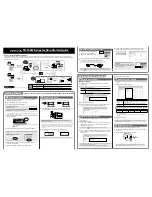
BENDIX/KING
KLN 94
Rev 0, Sept/2000
15599M00.JA
Page 5-29
1.
Store and transport all MOS devices in conductive material
so that all exposed leads are shorted together. Do not insert
MOS devices into conventional plastic “snow” or plastic
trays used for storing and transporting standard semicon-
ductor devices.
2.
Ground working surfaces on workbench to protect the MOS
devices.
3.
Wear cotton gloves or a conductive wrist strap in series with
a 200K
Ω
resistor connected to ground.
4.
Do not wear nylon clothing while handling MOS devices.
5.
Do not insert or remove MOS devices with power applied.
Check all power supplies to be used for testing MOS devic-
es. and be sure that there are no voltage transients present.
6.
When straightening MOS leads, provide ground straps for
the apparatus for the device.
7.
Ground the soldering iron when soldering a device.
8.
When possible, handle all MOS devices by package or
case, and not by leads. Prior to touching the device, touch
an electrical ground to displace any accumulated static
charge. The package and substrate may be electrically
common. If so, an electrical discharge to the case would
cause the same damage as touching the leads.
9.
Clamping or holding fixtures used during repair should be
grounded, as should the circuit board, during repair.
10.
Devices should be inserted into the printed circuit boards
such that leads on the back side do not contact any material
other than the printed circuit board (in particular, do not use
any plastic foam as a backing).
11.
Devices should be soldered as soon as possible after as-
sembly. All soldering irons must be grounded.
12.
Boards should not be handled in the area around devices,
but rather by board edges.
13.
Assembled boards must not be placed in conventional,
home-type, plastic bags. Paper bags or antistatic bags
should be used.
14.
Before removing devices from conductive portion of the de-
vice carrier, make certain conductive portion of carrier is
brought in contact with well grounded table top.
E.
PC Board, Two-Lead Component Removal (Resistors, Capacitors, Diodes, etc.)
1.
Heat one lead from component side of board until solder
flows, and lift one lead from board; repeat for other lead and
remove component (note orientation).
2.
Melt solder in each hole, and using a desoldering tool, re-
move solder from each hole.
3.
Dress and form leads of replacement component; insert
leads into correct holes.
Summary of Contents for bendis king KLN 94
Page 2: ...MAINTENANCE MANUAL KLN 94 GPS NAVIGATION SYSTEM ...
Page 11: ...BENDIX KING KLN 94 Rev 0 Sept 2000 15599M00 JWA Page 4 3 FIGURE4 1 KLN 94 UNIT BLOCK DIAGRAM ...
Page 75: ...BENDIX KING KLN 94 Page 5 36 15599M00 JA Rev 0 Sept 2000 THIS PAGE IS RESERVED ...
Page 80: ...BENDIX KING KLN 94 Rev 0 Sept 2000 15599M00 JWA Page 5 45 FIGURE5 3 KTS 143 TEST FIXTURE ...
Page 89: ...BENDIX KING KLN 94 Page 6 4 15599M00 JA Rev 0 Sept 2000 THIS PAGE IS RESERVED ...
Page 97: ...BENDIX KING KLN 94 Page 6 16 15599M00 JA Rev 0 Sept 2000 THIS PAGE IS RESERVED ...
Page 101: ...BENDIX KING KLN 94 Page 6 22 15599M00 JA Rev 0 Sept 2000 THIS PAGE IS RESERVED ...
Page 104: ...BENDIX KING KLN 94 Page 6 26 15599M00 JA Rev 0 Sept 2000 THIS PAGE IS RESERVED ...
Page 108: ...BENDIX KING KLN 94 Page 6 32 15599M00 JA Rev 0 Sept 2000 THIS PAGE IS RESERVED ...
Page 155: ...BENDIX KING KLN 94 Page 6 106 15599M00 JA Rev 0 Sept 2000 THIS PAGE IS RESERVED ...
Page 159: ...BENDIX KING KLN 94 Page 6 112 15599M00 JA Rev 0 Sept 2000 THIS PAGE IS RESERVED ...
















































